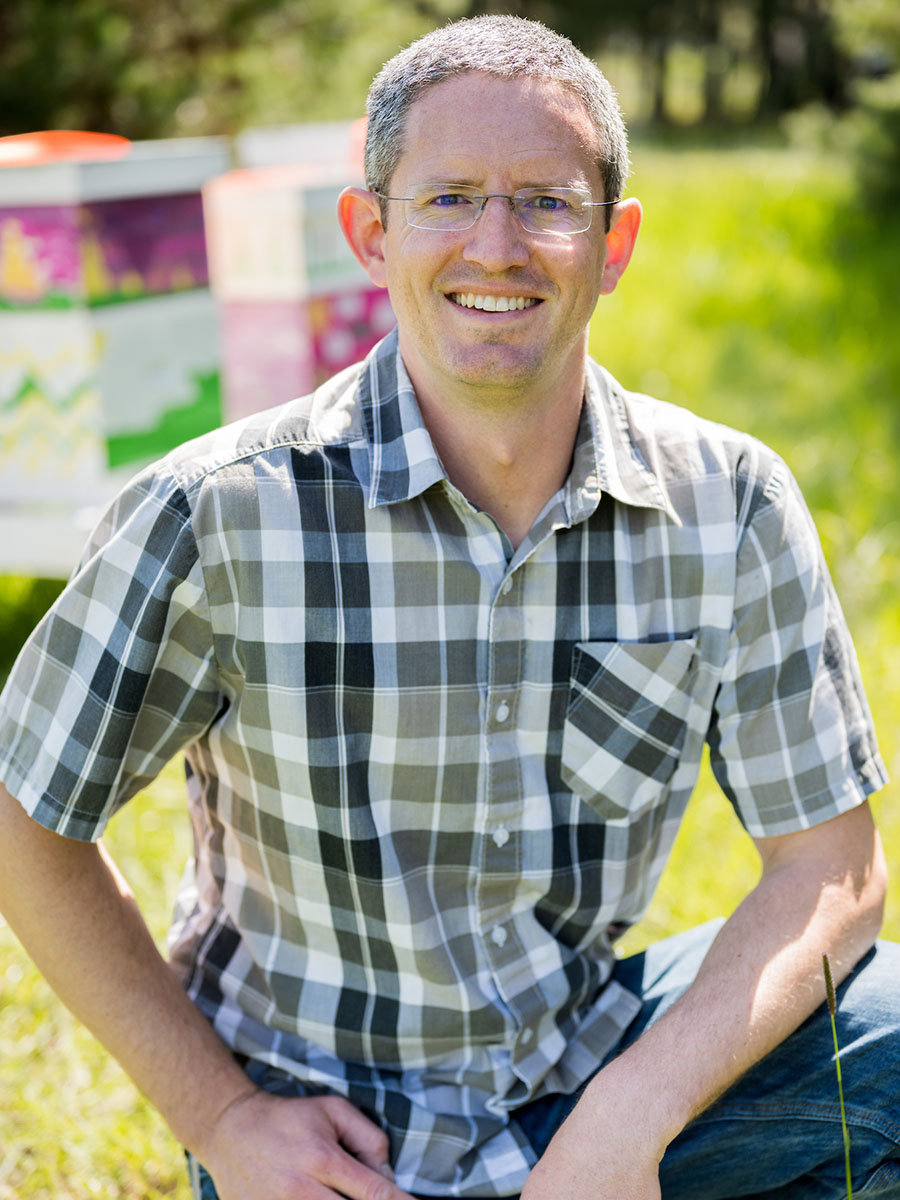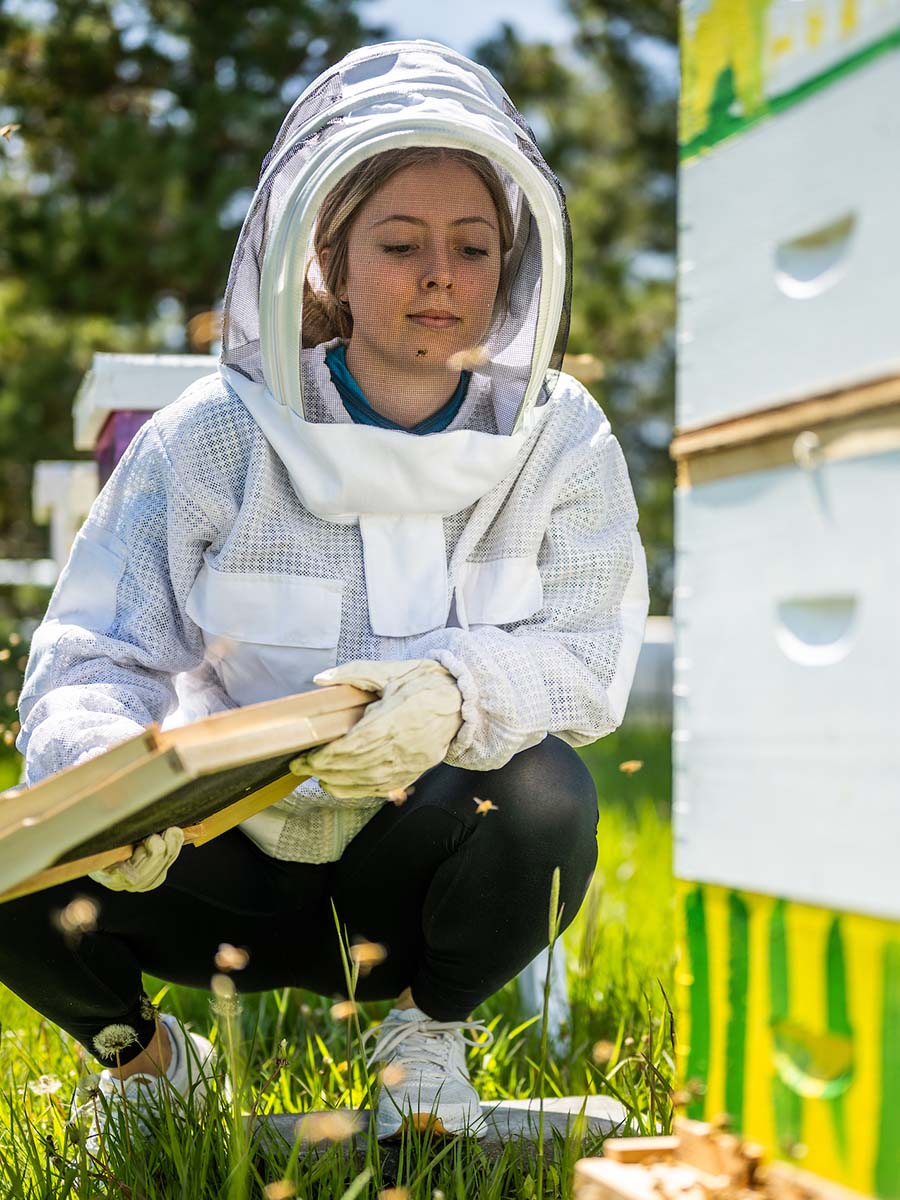Honing in on Bee Disease
Seeking Solutions for Honeybee Health
Working in the lab of microbiology professor James Van Leuven, undergraduate Keera Paull looks for ways to kill the bacteria in bees that cause foulbrood disease.
Microbiology Major Determined to Cure Honeybee Disease
The “Bee Movie” may have inspired Keera Paull’s devotion to honeybees.
Or maybe it was the cartoon likeness on the box of her favorite honey-flavored breakfast cereal that spurred her fondness for the insects that she watched, from a young age, buzzing between clover on North Idaho’s Rathdrum Prairie.
“I was never afraid of them, like most kids. I used to get bumble bees to crawl on my hands,” said Paull, a University of Idaho senior and science major. Even though Paull can’t pinpoint, exactly, when she fell in love with honeybees, the loyalty resulted in a honeybee tattoo and a promise to her high school class that she would pursue a career in helping bees survive.
Since enrolling at U of I, Paull has kept that promise.
As part of her undergraduate research in professor JT Van Leuven’s lab, Paull is isolating bacteriophages, viruses that infect bacteria. She hopes that by identifying and propagating the viruses she can use them to attack two species of bacteria that cause foulbrood disease in beehives.
American foulbrood is a fatal honeybee disease caused by bacteria that kill bee larvae. Beekeepers are often forced to burn infected colonies, and the wooden hives in which they live, to prevent the spread of the disease.
“Treatment options for foulbrood are minimal and destructive,” Paull said. “Antibiotic treatment is generally only used by commercial beekeepers in the U.S. and is banned in Europe.”
Treatment with antibiotics contributes to the spread of antibiotic resistance and requires testing before human consumption of treated bee products, she said.
Paull, a recent recipient of the Beverly Flowers Memorial Scholarship, spent last summer extracting and sequencing bacteriophage — or phages — and bacterial DNA from honeybee samples collected in the Pacific Northwest. She performed whole genome sequencing on the phages to help genetically characterize and distinguish the different versions.

“Keera’s research is important for developing the basic principles of viral ecology,” Van Leuven said. “Her results have practical application in helping honeybees.”
Her results have practical application in helping honeybees. James “JT” Van Leuven, professor
Paull, who grew up in Coeur d’Alene and was active in 4-H in high school, can’t remember when bees didn’t fascinate her.
“I did a lot of photography in 4-H and my favorite thing to take pictures of were insects, especially bees because they are pretty,” she said. “I always focused my high school projects on bees and how to help them survive.”
Her lab work is helping researchers understand how microbes in a honeybee’s environment — including its gut — contributes to bee health.
“In a very short period of time, she has become a skillful and valued member of the lab,” Van Leuven said. “I cannot wait to see what directions her curiosity and hard work ethic take her.”
This project was funded to Regents of the University of Idaho by National Institute of General Medical Sciences under award 2P20GM104420. The total project funding is $11,492,163.00 of which 100.00% is the federal share. (Official title - Center for Modeling Complex Interactions). In addition, this project was funded to Regents of the University of Idaho by NIH/National Institute of General Medical Sciences under award OIA 1757324. The total project funding is $21,062,724.00 of which 81.01% is the federal share. (Official title - RII TRACK-1: LINKING GENOME TO PHENOME TO PREDICT ADAPTIVE RESPONSES OF ORGANISMS TO CHANGING LANDSCAPES)

Article by Ralph Bartholdt, University Communications.
Photos by Joe Pallen, Creative Services.
Video compilation by Melissa Hartley, Creative Services.
Published in June, 2022.








